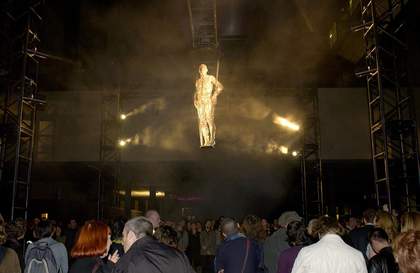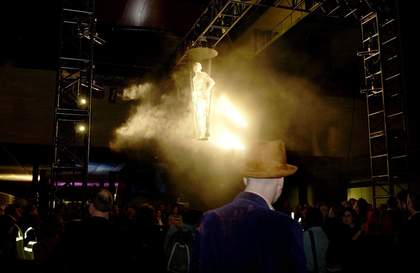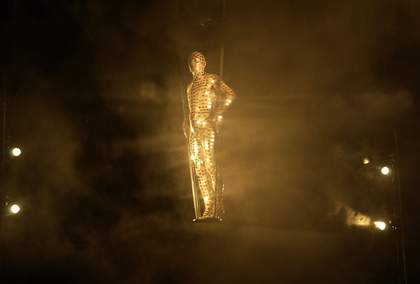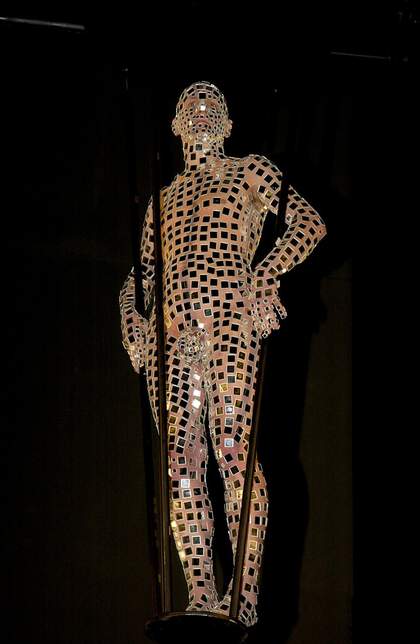Armadillo for Your Show was an hour-long performance by the Ukranian artist Oleg Kulik in which he stood on a trapeze hanging from the rafters of the Tate Modern Turbine Hall. He was dressed in a golden leotard decorated with small stamp-size mirror pieces. Light was projected onto him, making him like a human glitter ball for the audience below. Throughout the performance Kulik held still, balancing on the trapeze on tiptoes, as trance-like music played. The performance became an act of endurance for the artist. The glamour of the costume and the drama of the spectacle contrasted with Kulik’s potential pain and suffering. The work’s title Armadillo for Your Show linked the artist’s mirrored costume to armadillo skin and likened the artist’s situation to that of a caged animal performing for the public.
Kulik’s had evoked animal life in a number of early works. In The Mad Dog 1994, Reservoir Dog 1995 and I Bite America and America Bites Me 1997, he took on the persona of a dog, challenging those who witnessed the performances to treat him as anything but a potentially dangerous animal. In Dog House, during the international group exhibition Interpol held in Stockholm in 1996, the artist bit an audience member who got too close, having ignored the ‘dangerous’ sign placed next to Kulik’s dog house. Describing these attempts to dehumanise himself before the audience, Kulik has said that his works are ‘a conscious falling out of the human horizon’.1 Armadillo for Your Show pushed the audience to their relational limits, with Kulik once again consciously removing his own identity through transformation and disguise. The audience were forced to confront the ambiguity of his status throughout the performance, both accepting Kulik’s presence above them, while objectifying the artist as they danced in the pool of shimmering light created by his body.
Armadillo for Your Show was performed on the opening night of Live Culture, a programme of performance focused events which took place at Tate Modern from 27 to 30 March 2003. Supported by Arts Council England, Live Art Development Agency, The Felix Trust for Art and The Henry Moore Foundation, Live Culture was intended to provide an opportunity for audiences to engage with the shifting nature of live art practice in relation to the visual arts. The programme brought together artists, theorists and curators to examine the expansion of performance art across broader artistic and social arenas, exploring its role in relation to cultural change and highlighting the ways in which the term live art has come to represent an array of contemporary practices that employ performance as a generative force to break apart traditions of representation and open out different kinds of engagement with meaning.
Clare Gormley
June 2016




